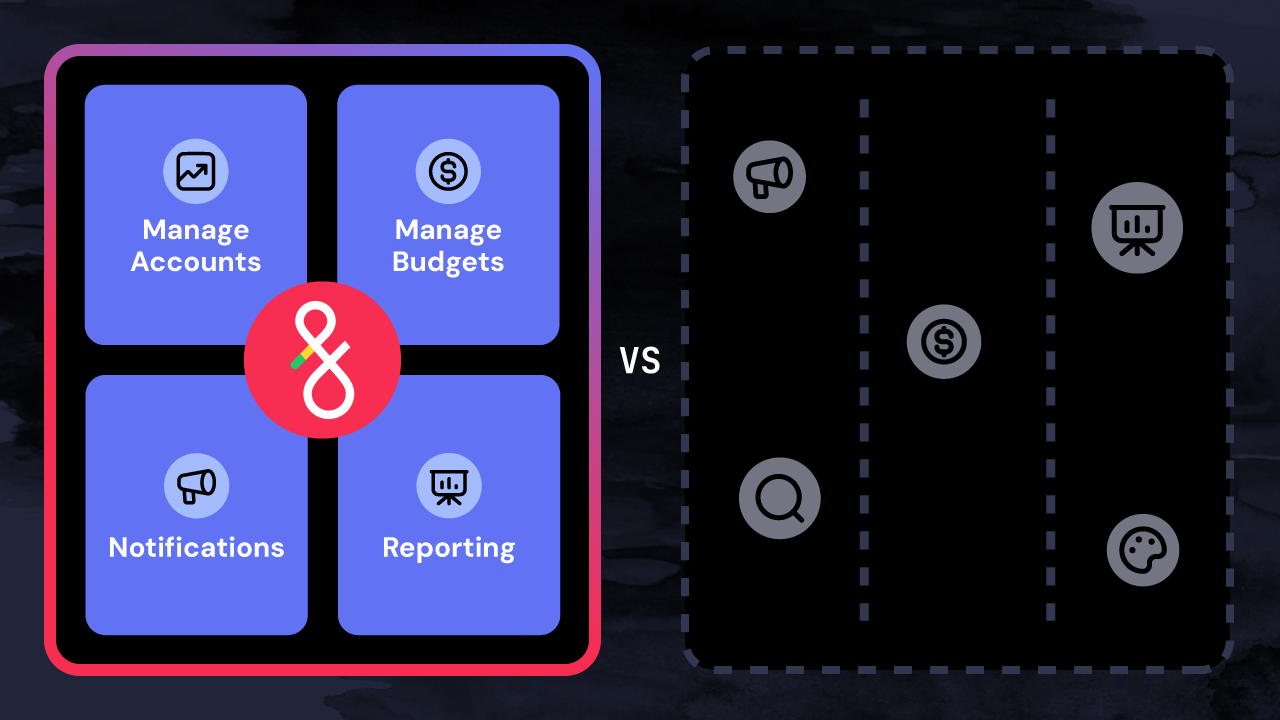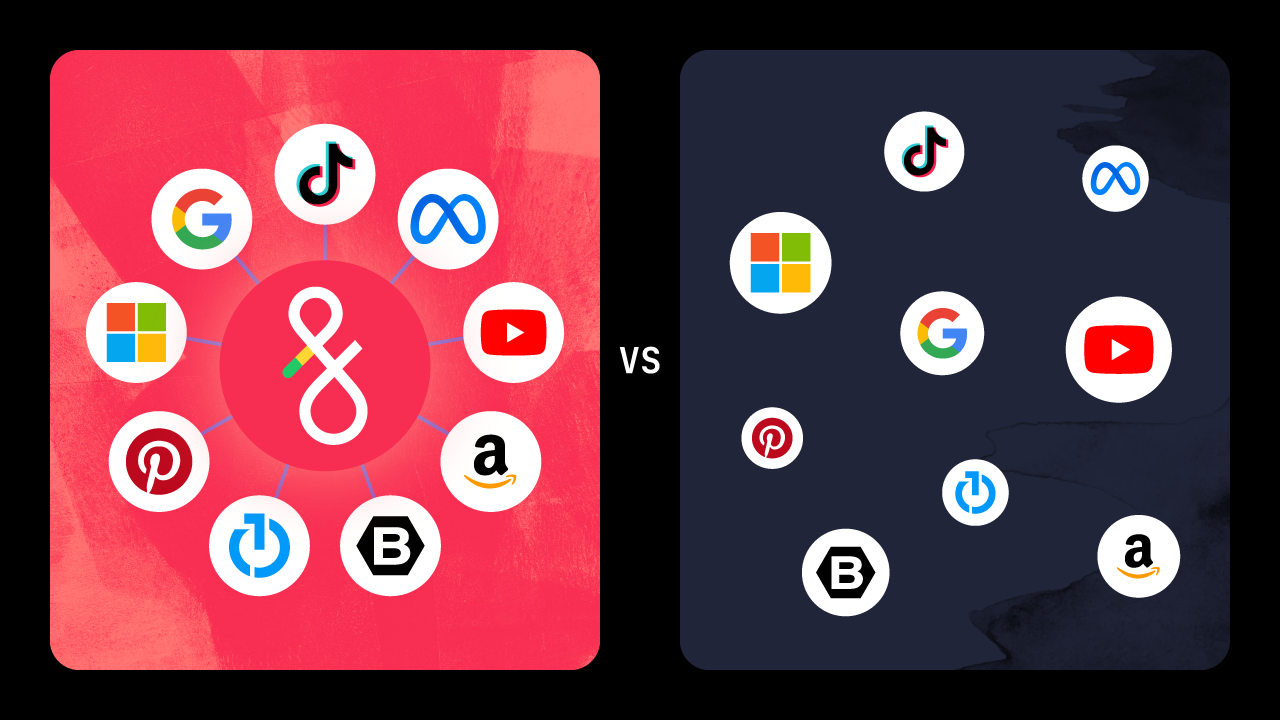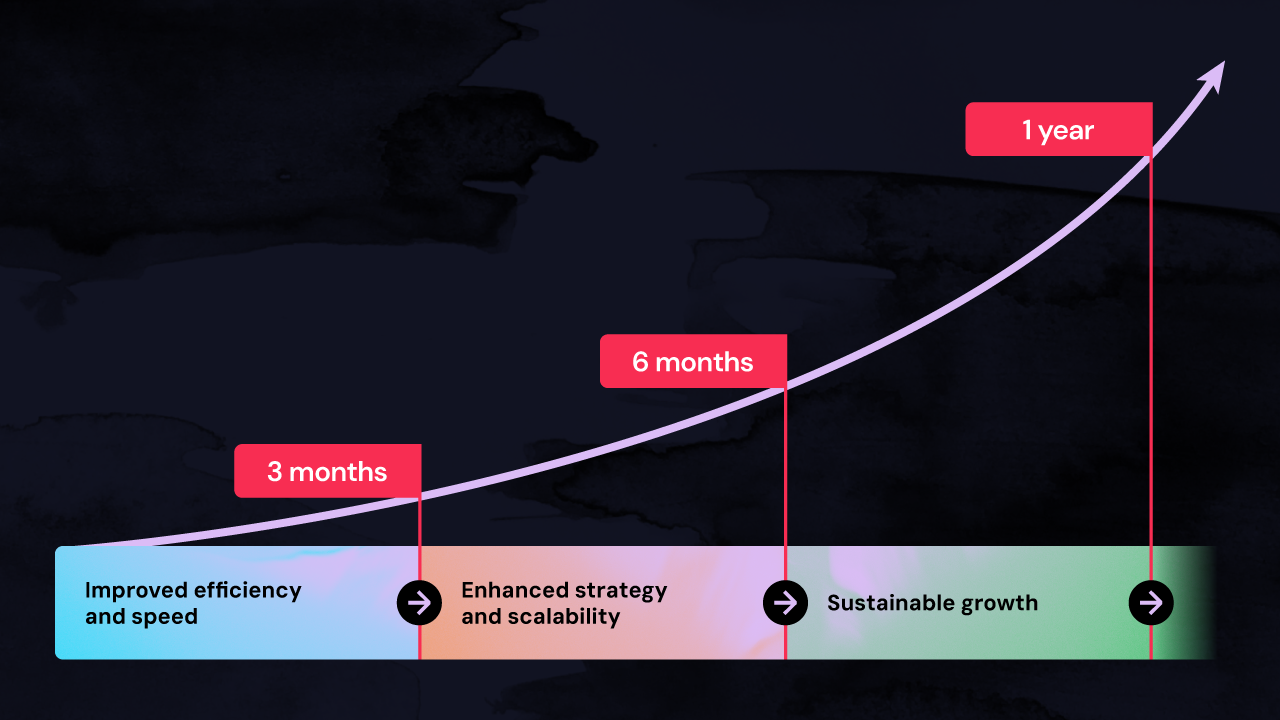It’s been a little over five years since we started Fluency. In that time we’ve had hundreds of conversations with agencies and enterprises of all shapes and sizes about the opportunities they were trying to pursue, the problems they needed help in solving, and how they could improve and scale their digital advertising business. Many of those businesses are now clients and partners of ours, while others ended up saying no to us (and possibly by extension, to automation itself.*) The problem with saying no to automation? The problems you came to us with won’t magically go away, and in most cases, end up compounding. Because we’ve seen and heard this too many times to count, we thought it would be helpful to look at a handful of those common challenges, and the cost of not using automation to solve them.
The first challenge: You have people problems. The ad industry is relentless in its demands, and if you aren’t providing your team with the tools they need to meet those demands, your experts will churn. This turnover creates a knowledge and talent vacuum that makes it difficult to service your existing clients’ strategic and tactical needs.
Second: Writing credits. Your clients’ advertising spends are heavily governed by a “meet but not exceed” rule, where budgets and performance guarantees put your bottom line at risk because while you might make 20 cents for every dollar of a client’s money you spend, any overspend will having you writing credits back to them for full value of the overspend. Plus, if you’re UNDER spending, you won’t be maximizing your revenue opportunities while also falling short of your clients’ expectations.
The third challenge also relates to people: You’re struggling to scale. Your current model limits account growth because of inflexible headcount requirements, and you want to decouple your ability to grow from that.
The fourth one is a subject that’s near and dear to our CEO’s heart: You’re an enterprise and you’ve probably tried at least one of the tenured, legacy enterprise marketing tools, recognized those tools don’t meet your needs, and then tried building your own—it didn’t work—and this is the end of the road, the last stop, a Hail Mary in hopes that despite the wasted time, it’s not too late to fix the existential problems facing your advertising efforts.
Despite our platform being able to sustainably solve all these challenges, some companies that come to us still end up saying no, for reasons running from the price tag to internal resistance, through to sunk cost fallacies, and beyond. Let’s look at what saying no to automation costs you, relative to the challenges you were hoping it would solve.
We have to start with people, since they form the basis of two of the four challenges that businesses are coming to us to help solve. We’re big believers in the fact that you can’t hire your way out of headcount-related problems. If that worked, you would’ve done it already, and oh, by the way, have you checked the pulse of, well, everything? In the uncertain economic climate we’re in now, staffing problems are only going to get worse: whatever you thought you were guaranteed for headcount in 2023? At best that number freezes, and it may in fact shrink. So whether you thought being understaffed was causing tension for your existing business or you were trying to ignore how it was limiting growth, not bringing an automation-enabled platform into your agency will only help those problems multiply in relatively short order.
Next, that whole “writing credits” thing which, depending on the verticals and industries you serve, probably extends beyond just the over/underspend problem into areas like compliance and regulatory issues. These are honestly risks that no sane, mature, capable agency or marketing team should be exposing themselves and their brands to in this day and age. If Automation SOLELY existed to make sure you didn’t over or under spend your budgets, and your advertising content and creative were customized so that it was brand compliant and played by local, state, and national laws, it would be worth its weight in gold. By continuing to rely on manual means to implement budgets and creative, you’re putting your bottom line (and more) at risks that are far greater than any savings you think you’re seeing by not investing in automation.
Finally, of all the problems outlined above, the “Oh, we’ll just build a few tools in house.” Our backstory at Fluency stems from first-hand experience with this approach and we can tell you in all honesty, “No, you can’t.” A company—any company—whose core value proposition is not based around designing, developing, and maintaining enterprise-level ad software can expect nothing but wasted money, wasted years, and a lot of tears—with NOTHING to show for it. It’s taken our team 20 years of hard-won experience and five years of focused effort to develop an automation-enabled platform that we can honestly and proudly say works.
And do you know what’s truly wild about the investment in time and money and resources related to this kind of software? It’s that it NEVER ends. It’s like losing weight or getting in shape: the hard part isn’t solely getting to your goal…it’s STAYING there. Staying ahead of API changes in channels and on platforms. Adopting new, relevant, valuable technologies as soon as they come out. Meeting and exceeding demands dictated by the industry, the clients, and even macro events that on the surface have nothing to do with digital advertising. It’s exhausting, intensive, and most likely not something your company has the stomach—or the budget—to sustain.
If you’re reading this blog, chances are good you’re currently feeling at least some of the effects of saying no to automation. You’re wishing you had been more aggressive at hiring early in Q1, before your CFO started tightening things up—while at the same time knowing what people you could’ve brought on would’ve only been a temporary bandaid. Maybe your bottom line continues to suffer death by a thousand cuts because the team you do have is overworked, possibly underqualified, and keeps missing details that cost you real money. Or your company built a system that doesn’t work, and you and your team are suffering in silence while you deal with its shortcomings. Plus, the unfortunate reality for many of you is that your job may hang in the balance based on your ability to solve your company’s specific problems.
Whatever the situation you’re in, doing nothing is not an option: every issue you’re facing will end up compounding in the short term while becoming insurmountable in the long term. The good news? All of us here at Fluency are confident we can help you realize the benefits of automation in general—and our platform, services, and support in particular—to solve the evolving challenges your business faces. Why?
- Because we’ve learned every lesson about digital advertising the hard way; we’ve experienced every challenge you’re facing, and that experience has helped inform our platform, its features and functions, and the adaptability that allows it to evolve with the rapid and unpredictable changes in the industry.
- We know that technology is only as good as your ability to adopt it, so we’ve put as much focus on onboarding and client success as we have on the platform itself.
- And because we also know firsthand how daunting adopting new technologies like this can be, and that a partner that can help guide you away from fear and indecision towards solving your problems while opening up new opportunities is going to be critical for your success.
Hopefully some—if not all—of this rings true with you. And if you’ve said no to automation—or even to Fluency—in the past, please know that we don’t take it personally. We have to be honest though: there isn’t going to be a better time to say yes than right now, so please reach out and we’ll set something up with you and your team immediately.
* There are very few enterprise advertising platforms on the market. Most companies have experience with one or several of the legacy platforms and are in seek of further automation.






